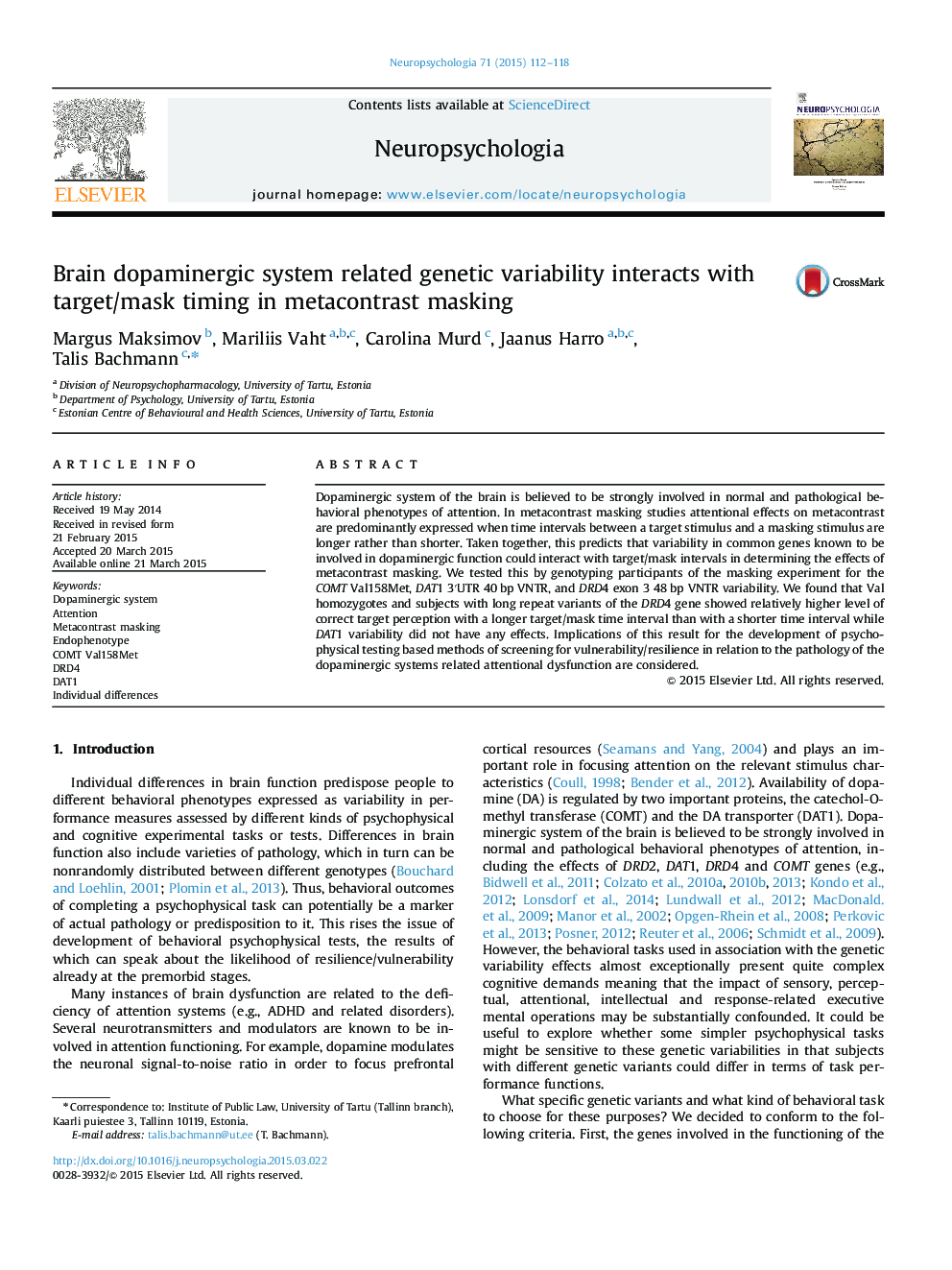| Article ID | Journal | Published Year | Pages | File Type |
|---|---|---|---|---|
| 7320198 | Neuropsychologia | 2015 | 7 Pages |
Abstract
Dopaminergic system of the brain is believed to be strongly involved in normal and pathological behavioral phenotypes of attention. In metacontrast masking studies attentional effects on metacontrast are predominantly expressed when time intervals between a target stimulus and a masking stimulus are longer rather than shorter. Taken together, this predicts that variability in common genes known to be involved in dopaminergic function could interact with target/mask intervals in determining the effects of metacontrast masking. We tested this by genotyping participants of the masking experiment for the COMT Val158Met, DAT1 3â²UTR 40Â bp VNTR, and DRD4 exon 3 48Â bp VNTR variability. We found that Val homozygotes and subjects with long repeat variants of the DRD4 gene showed relatively higher level of correct target perception with a longer target/mask time interval than with a shorter time interval while DAT1 variability did not have any effects. Implications of this result for the development of psychophysical testing based methods of screening for vulnerability/resilience in relation to the pathology of the dopaminergic systems related attentional dysfunction are considered.
Keywords
Related Topics
Life Sciences
Neuroscience
Behavioral Neuroscience
Authors
Margus Maksimov, Mariliis Vaht, Carolina Murd, Jaanus Harro, Talis Bachmann,
